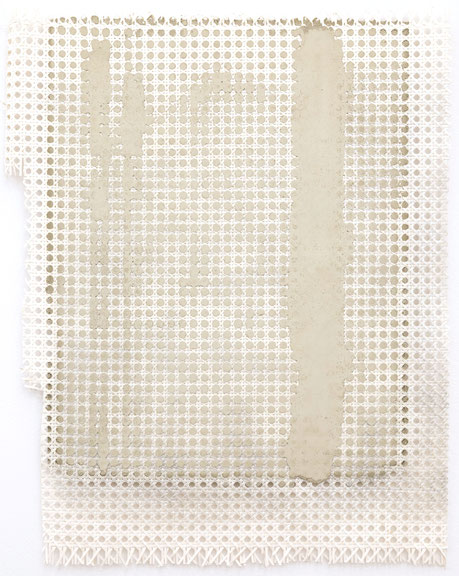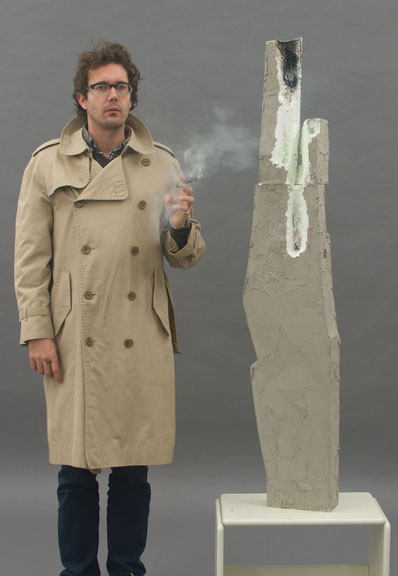There are at least two ways of leaving a trace, a mark, let us say, a footprint in the snow.1 There is that of the Good King Wenceslas, the righteous king (rex justus), the pious master, who leaves footsteps in the snow for his ailing page to follow. As John Mason Neales’s carol from 1853 puts it: ‘“Mark my footsteps, good my page. / Tread thou in them boldly/ Thou shalt find the winter’s rage freeze thy blood less coldly’. / In his master’s steps he trod, where the snow lay dinted;/Heat was in the very sod which the saint had printed.” And there is, on the contrary, the footprints that Danny leaves, or better, does not leave, for his demented father, played, of course, by Jack Nicholson, in Stanley Kubrick’s The Shining.
At stake in this opposition between these two footprints is not simply a distinction between a sign that leads and one that misleads, between the true and the false, but the differing manners in which these signs, these footprints, serve to inscribe the subject’s relation to the markers of its appearance, the signs of its legibility. For Wenceslas imprints his footstep, so the legend goes, with a sign of his Saintly character. It is the presence of warmth, this physical manifestation of his spiritual beneficence that establishes a relation between the objectivity of his physical absence and the quality of his spiritual presence. By following his master’s footsteps, the page’s weakening physical being is strengthened by the trace presence of his master’s spiritual being, whose traces mark a path not simply to the hearth, but direct the way to heaven itself.
For Danny the problem is the opposite. Faced with the impossible task of having to efface all traces of his physical being, he assumes, through a repetition of his own lack in/of place, the void of his presence. The act of retracing his footsteps, adopting the very imprint of his absence, radicalizes the split between his footprint qua sign of his physical presence (an indicator of his place) and the sign’s physical presence as a marker of absence. Assuming his sign’s objective character of lack, Danny internalizes the difference between his footprint as a sign of his present absence and the footprint as a sign of his absent presence. It is the act of repetition that serves to differentiate the sign’s divisive power from its signifying or indicative function: the manner in which it bores a hole into the snowy plain and as consequence leaves a trace of his presence that indicates his direction.
Wenceslas’s footprints cannot lead his page astray. Their retention of warmth, a sign of the good, grounds their direction in truth. Those who follow will find the way to hearth and home, and, ultimately, heaven above. These signs, thus, serve the symbolic function of protecting the place and right of kingship, as well as to support the belief in a world in which a sign’s truth receives its proper measure from the beneficent. The faithful page lives in a world where one has confidence in one’s betters, trusts in their humanity, and where the subject knows its place. One just has to follow the signs.
Danny, however, inhabits a world that is a living hell. Danny’s world is one in which fathers, like kings, having lost all sense of measure, can only maintain their authority through devouring their children. This Titanic world is one of consummate horror, where the least sign of a subject’s appearance, Danny’s footsteps, marks one for death. Unable to efface his traces without, in turn, being effaced, Danny finds an ingenious solution: actively unhinging the sign from its signifying function – untethering it from all sense of propriety – turning the very marking of his place to his advantage. Like a confidence-man, Danny, makes use of the sign’s leading quality to mislead.
Danny escapes from the destructive logic of his trace – the way in which it marks him for death – only by assuming the signs of his presence as the very markers of his absence. Assuming his footprint not simply as a sign of his presence but the very cut (a void in the snow) that marks his relation to absence, Danny impersonates the signs of his own absence. To retrace his footsteps, to count them again in reverse, he must proceed negatively, he must be able to count the manner in which he counts for nothing. He counts himself out. Presenting himself as absent, Danny misleads neither by leaving a false trace nor by simply effacing his tracks in the snow, as a cat covers its shit, but hides them in place by retracing, remarking, registering, that is to say, repeating them, as if to absent himself in place.
The illusion of his disappearance lies in making a footprint that is not a footprint by being a footprint. A logical riddle that Danny indeed solves by walking backwards in the very dint of his own trod: repeating not simply the footprint, but it’s character of lack. By doing so, Danny differentiates the sign’s referential function (i.e., the sign’s capacity to present that which is absent) from the mere fact of its inscription. He registers the difference between the imprint (the fact of inscription) and its sense: shifting the stress from the presentation of absence to the presentation of absence: from absent presence to present absence. A slight, imperceptible shift, as if passing from void to void, that has miraculous effects. By repeating the sign of his absent presence as an empty act of inscription, what is registered is his present absence.
This act of repetition differentiates the footprint as a hole in a thing it is not from its referential function as a sign that indicates the direction of his person. Danny makes something… he makes something vanish, namely the presence of his person. It is his capacity to repeat the empty place of the sign (the sculptural act that objectifies his presence) by registering it that allows him to appear to disappear. Proceeding negatively, repeating the place of his absence, Danny makes an object of his absence. He objectifies the void.
By relating to the sign that marks the absence of his presence as an absence, Danny can mislead precisely by leading, that is, by leading his father to his absence. Like a magician, he makes his person vanish. Positioning the sign within the space of its own inconsistency – where it at once leads and misleads, is true and false – Danny hides the signifying power of his trace by repeating it, occupying the difference between his footprint’s signification (an absence that refers to a presence) and its pure form (the presentation of an absence). He positions himself in the place of his own absence: the empty footprint, the void of his presence.
Danny thus inhabits the gap within signification that is constituted by the act of repetition itself. The fact that the presentation of an absence enables one to hide a presence through a repetition of the act of registration indicates a difference between that which is repeated (the imprint) and the act of repetition itself (the act of imprinting). This structural difference between repetition (that which is repeated) and the act, between the place and an act that takes place, entails that signification is always already divided. The repetition of an act divides the act differentiating the place from the place that the mark occupies. Repetition re-inscribes through the registration of absence a difference between the material event of the sign, the act of its taking place, and the advent of its signification.
Repetition as the act of repeating is non-identical with that which is repeated. And this leads to an interesting paradox of repetition, namely that, what is repeated is repeatable, but the act of repetition itself is unrepeatable. One cannot repeat the act of repetition only the thing repeated. The paradox of repetition’s sense can be posed as follows: to repeat repetition is to repeat the unrepeatable. “Repetition,” as Lacan following Kierkegaard puts it, “demands the new”2. That which is new is the absence, which as such, is unrepeatable: the hole that is punched by the placing of the sign. This paradox results in the tendency for the act of repetition to divide itself from that upon which repetition depends, which is always something other than repetition, namely, that which is repeatable. Thus, repetition repeats the unrepeatable.
In retracing his footsteps, Danny does not repeat himself, but relates to the act of repetition that divides his appearance between its place (the act of placing that makes a void) and the sign’s occupation of that place: a difference between the presence of the foot (even qua absent) and the hollow it makes in the snow (the void of its presence). The sign becomes a sign of its own absence through a repetition of the sign’s indicative function, situating it in the place of its own absence, repeating the manner in which it indicates the place of Danny’s presence. The sign must lead in order to mislead; it leads and therefore misleads. In effect, by relating to the act of repetition Danny separates himself from himself, the place of subject from the person that appears in its place, by separating the lack (the void in place) from what is lacking (the presence towards which the absence points). To repeat, to proceed negatively, is not merely a matter of going in reverse, like playing a film backwards. The thinking required to repeat an act relates to the disjunction between the forward and the backward. The backward repeats the forward and thereby misleads by leading. What is marked or registered through the act of repetition is the footprint as thing, i.e., as a hole in a thing it is not. By identifying with this gap – this object-void – occupying the site of a repeated footprint, Danny identifies with that character of absence that assigns to him his lack of character. Becoming the impersonator of his own absence, Danny is what I call an absentee subject. To be an absentee subject it is not enough to simply efface one’s traces, but one has to repeat the absence they make, positioning the subject in the object place of its absence.
This formula – a thing is a hole in a thing it is not – I borrow from a statement by the sculptor Carl Andre.3 The place of the subject is positioned in relation to the difference between the hole that is made in space and the space of the hole, a difference the subject maintains only through the object of its attachment. The subject is attached to the thing as hole. If Danny sustains this difference through the act of repetition, it is because through this act he makes an object of his absence. Danny is a sculptor. He shines. He has the sixth-sense.
1 The following remarks are excerpted from my book Liquidation World: On the Art of Living Absently, MIT Press, 2017.
2 Jacques Lacan, Seminar IX: The Four Fundamental Concepts of Psychoanalysis, ed. Jacques-Alain Miller, trans. Alan Sheridan (New York: W.W. Norton & Company, 1978), p. 61.
3 In a statement delivered at a Symposium at Windham College in 1968: “I would say a thing is a hole in a thing it is not. Our whole education is conducted by linguistic means. Language is mostly devoted to symbols, and art has very little to do with that. Any artist can symbolize but very few artists can execute. I would say all ideas are the same except in execution. They lie in the head. In terms of the artist, the only difference between one idea and another is how it is executed” [Carl Andre, CUTS: Texts 1959–2004, ed. James Meyer. MIT Press 2005), p. 84].


